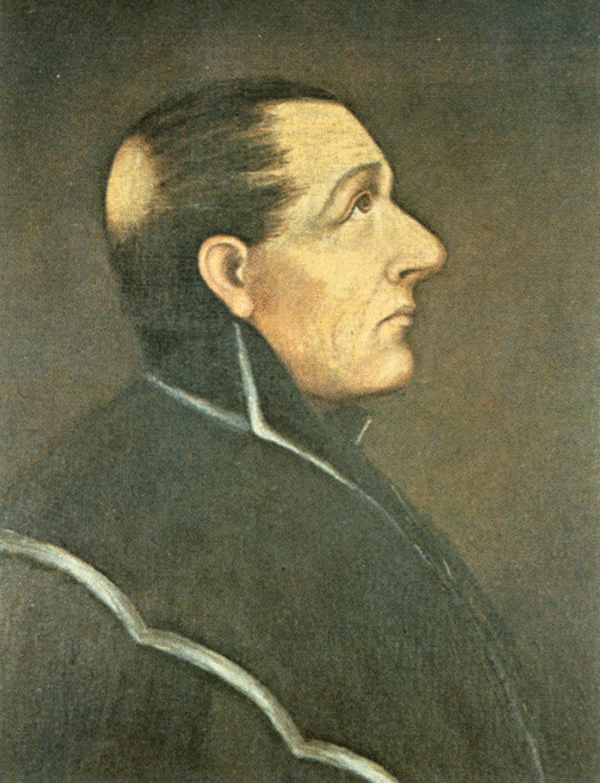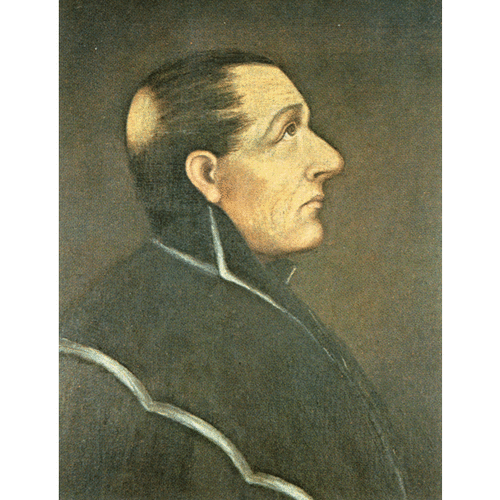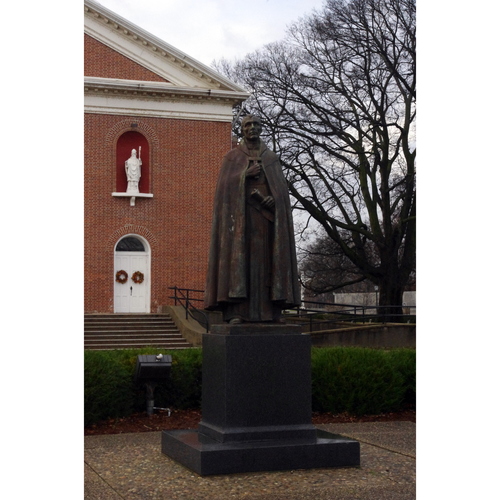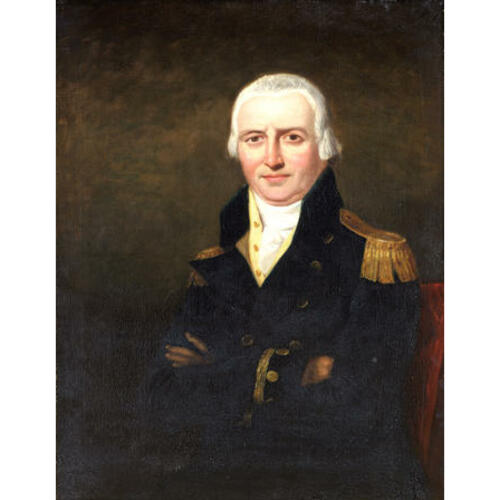
Source: Link
GIBAULT (Gibaut), PIERRE, Roman Catholic priest and missionary; baptized 7 April 1737 in Montreal (Que.), eldest child of Pierre Gibault and Marie-Joseph Saint-Jean; d. 16 Aug. 1802 in New Madrid (Mo.).
Information on the early years of Pierre Gibault is sketchy. He probably attended the Jesuit college at Quebec, and in 1759 he made a journey to Detroit (Mich.) and Michilimackinac (Mackinaw City, Mich.), perhaps as a helper in a trading company. On 19 March 1768, following two years of theological studies at the Séminaire de Québec, he was ordained by Bishop Briand*, and early in June he left for the Illinois country as vicar general. There he was to join Sébastien-Louis Meurin, already advanced in age and the only priest between Michilimackinac and New Orleans (La) since the hasty departure of Jacques-François Forget* Duverger and the expulsion of the Jesuits in 1764. Much to Briand’s annoyance, Gibault was accompanied by his mother and sister.
Making his official residence at Kaskaskia (Ill.), the major village, he regularly visited all the French settlements from Vincennes (Ind.) to Ste Genevieve (Mo.). During the first few years Gibault’s Kaskaskia parishioners were devoted to him, but they came to resent his frequent absences in other settlements. Under the French régime the state had subsidized the church, but once the region came under British authority the people had to support their priest by tithing. They grew restless and critical. Unjust accusations against him were forwarded to Quebec and, though unwarranted, plagued him till his death.
Gibault’s claim to historical fame rests on his role in George Rogers Clark’s capture of the Illinois country. In 1778 Clark received a commission from the governor of Virginia to invade the west, and on 4 July he marched into Kaskaskia. Spokesmen for the village, Gibault included, agreed to cooperate with the invaders and Clark promised to leave them in peace. He seized the other villages in the vicinity and then, intending to proceed against Vincennes, consulted Gibault. The missionary, he reported, declared “he would take this business on himself and had no doubt of his being able to bring that place over to the American Interest without my being at the Trouble of Marching Troops against it. . . .” Gibault and Jean-Baptiste Laffont, a doctor, spent a day or two discussing the situation with the inhabitants of Vincennes, who then swore loyalty to the Americans. Gibault also conveyed Clark’s regards to Tobacco’s Son, chief of the Piankeshaws, and that Miami tribe remained neutral or friendly thereafter. The missionary’s activities earned him the wrath of British authorities: Lieutenant Governor Henry Hamilton* of Detroit thought he should be hanged. Bishop Briand, who had condemned collaboration with the rebels, suspended him from his ecclesiastical functions on 29 June 1780. Perhaps Gibault did not receive the bishop’s letter. At any rate he continued ministering to the Illinois settlements and later denied any complicity with the rebels. To Americans, however, he is sometimes known as the patriot priest.
With the arrival of other missionaries, Gibault moved across the river to Ste Genevieve in 1780. There he came under the civil jurisdiction of the Spanish crown and the ecclesiastical authority of the bishop of Santiago de Cuba. Possibly none too comfortable in that situation, after five years he removed to Vincennes. In 1788 he requested recall to Quebec but Bishop Hubert* refused. “After the disadvantageous opinion that the government has formed of him, I can not prudently consent to his return,” he noted. The next year Gibault returned to Kaskaskia because all the priests who had come to the Mississippi valley had departed for one reason or another.
In 1787 the Northwest Ordinance had brought American civil government to the valley. Residents were required to justify the legality of their claim to land they occupied. Gibault sent in a petition asking recognition of his private claim to the land on which the church and the pastor’s residence at Cahokia (Ill.) stood. Though the request was granted by President George Washington, the newly appointed American bishop, John Carroll, objected, considering the land ecclesiastical property. For Pierre Gibault, this was the last straw. He moved to the recently founded village of New Madrid, becoming a Spanish citizen in 1793. From 1792 until his death he was pastor of the parish of Saint-Isidore (the Immaculate Conception).
[Larger-than-life bronze statues of Gibault have been erected in Ste Genevieve and Vincennes. An extensive bibliography of material relating to his life appears in J. P. Donnelly Pierre Gibault, missionary, 1737–1802 (Chicago, 1971). Material particularly useful in the preparation of this article includes: AAQ, 7 CM, VI; Archdiocese of St Louis, Chancery Office (St Louis, Mo.), Reg. de la paroisse de Conception de Notre Dame des Cascaskiae; George Rogers Clark papers . . . [1771–84], ed. J. A. James (2v., Springfield, Ill., 1912–26), l; J. F. McDermott, “The library of Father Gibault,” Mid-America (Chicago), 17 (1935):273–75. j.p.d.]
Cite This Article
Joseph P. Donnelly, “GIBAULT (Gibaut), PIERRE,” in Dictionary of Canadian Biography, vol. 5, University of Toronto/Université Laval, 2003–, accessed December 13, 2025, https://www.biographi.ca/en/bio/gibault_pierre_5E.html.
The citation above shows the format for footnotes and endnotes according to the Chicago manual of style (16th edition). Information to be used in other citation formats:
| Permalink: | https://www.biographi.ca/en/bio/gibault_pierre_5E.html |
| Author of Article: | Joseph P. Donnelly |
| Title of Article: | GIBAULT (Gibaut), PIERRE |
| Publication Name: | Dictionary of Canadian Biography, vol. 5 |
| Publisher: | University of Toronto/Université Laval |
| Year of publication: | 1983 |
| Year of revision: | 1983 |
| Access Date: | December 13, 2025 |





